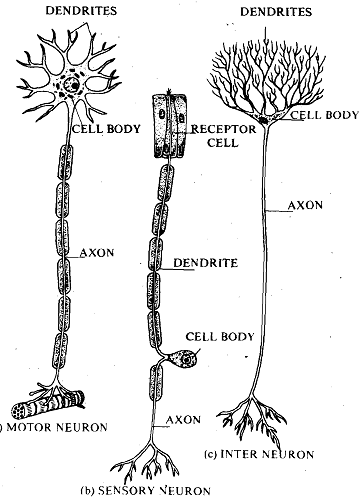Functional unit of the nervous system-neuron:
The human brain is composed of more than one hundred billion (100,000,000,000 or 1011) cells called 'neurons'. This number which is comparable to the number of stars in the Milky Way, gives us an idea about the size of the neurons also - because 10" of them fit in a space which slightly more than a litre of water can occupy. Since these neurons are the functional units of the whole nervous system, let us become familiar with some of their basic features. You can see some typical neurons in Fig.
Neurons can be categorised into the following kinds according to their functions :
a) Motor neurons : send signals from the nervous system to muscles and glands.
b) Sensory neurons : carry signals from the receptor cells in sense organs in the body to the nervous System. For example, signals generated by touch or smell or hearing etc.
c) lnter neurons or association neurons : process the sensory information received from other neurons, and convey messages. For example, when an insect bites, the fingers are given a command to~cratch at , that point. Most of the brain's neurons fall in this category.
The neurons are specialised to carry iqformation from one part of the body to another. These messages are referted to as nerve impulses. The nerve impulse occurs in response to some. stimulus or event which excites them. Notice in fig that in every neuron, fhe portion of the cell with the nucleus is called the cell body.
